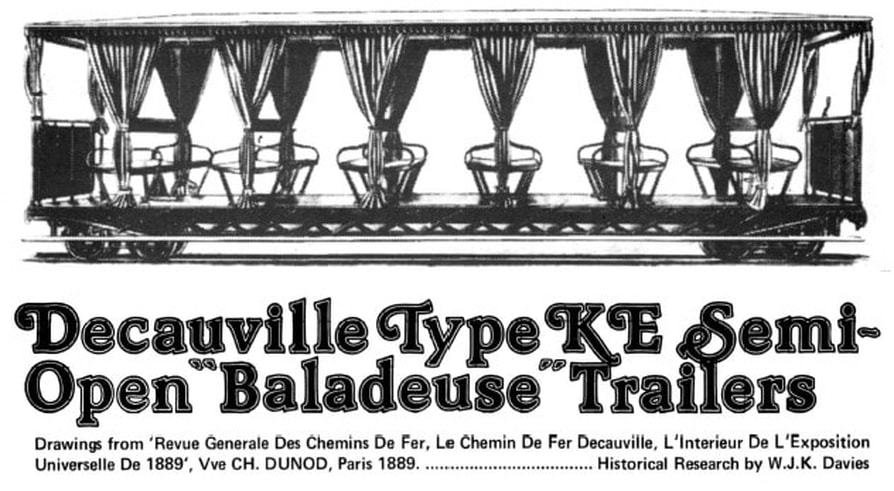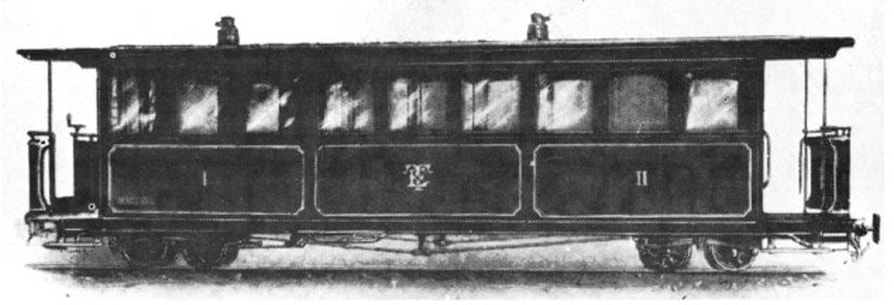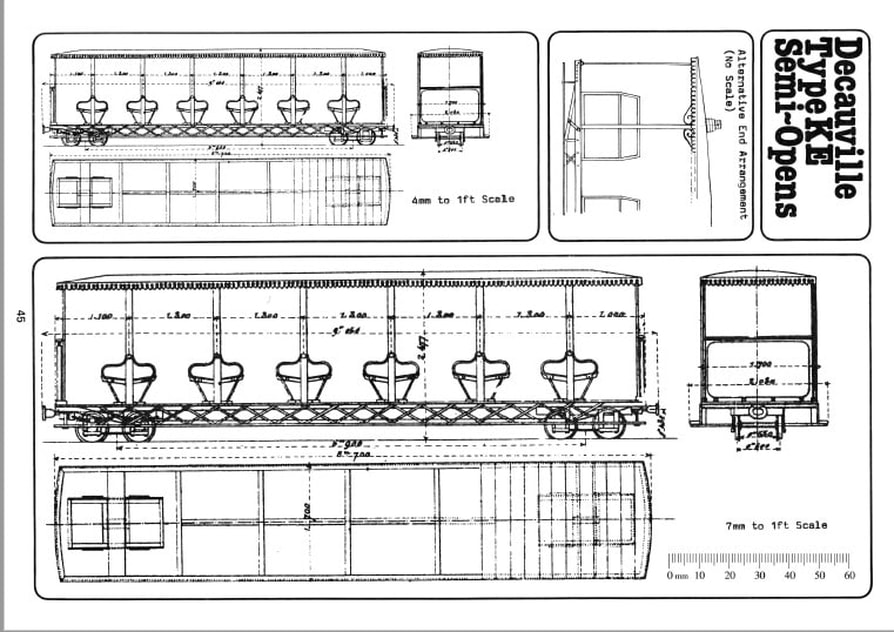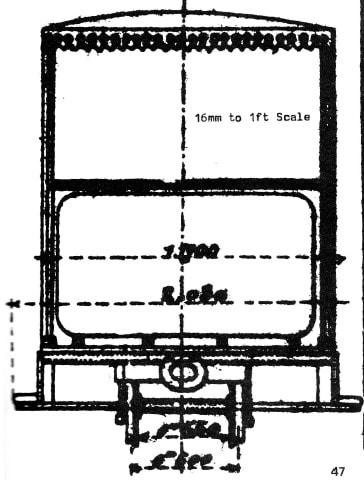In the heyday of secondary railways, many lines, particularly those likely to have tourist traffic in season, kept among their stock a few open or semi—open trailer coaches which they used for summer trains, or even to reinforce the normal trains in times of stress. Whatever the gauge or country, these were much the same, being of simple construction with no elaborate upholstery for the weather to spoil end usually with canvas side curtains for use in inclement weather.
A very popular type among those French minor lines which used the 60 cm gauge was the Decauville "Type SE", which is illustrated above. This was a 48 seater; it had wooden, slatted seats back—to—back on a metal—braced underframe, with a pillar handbrake at one end acting on one bogie only. It was unusual in having side curtains which were pulled horizontally instead of down from the roof, and had one odd feature in the Decauville Company's claim that there was room for eight standing passengers — presumably ranged at the ends!
Individual vehicles differed in minor details. One slightly more luxurious variant for second class passengers had boarded—in ends to the seats and three oil lamps on the roof, but all had the same running gear.
The type was first introduced at the Paris International Exhibition of 1889 and continued in production, virtually unchanged, until after the First World War. The drawings accompanying this article were taken from an engraving which appeared in the main Exhibition catalogue. Among the railways which used the "KE's" were the Royan steam tramway, the "Tramway de la Trinite a Etel", the Tramway de Rotheneuf and various branches of the Calvados system.
BELOW. Elegance on the "two foot". One of the Decauville—built Trinite a Etel saloons.
A very popular type among those French minor lines which used the 60 cm gauge was the Decauville "Type SE", which is illustrated above. This was a 48 seater; it had wooden, slatted seats back—to—back on a metal—braced underframe, with a pillar handbrake at one end acting on one bogie only. It was unusual in having side curtains which were pulled horizontally instead of down from the roof, and had one odd feature in the Decauville Company's claim that there was room for eight standing passengers — presumably ranged at the ends!
Individual vehicles differed in minor details. One slightly more luxurious variant for second class passengers had boarded—in ends to the seats and three oil lamps on the roof, but all had the same running gear.
The type was first introduced at the Paris International Exhibition of 1889 and continued in production, virtually unchanged, until after the First World War. The drawings accompanying this article were taken from an engraving which appeared in the main Exhibition catalogue. Among the railways which used the "KE's" were the Royan steam tramway, the "Tramway de la Trinite a Etel", the Tramway de Rotheneuf and various branches of the Calvados system.
BELOW. Elegance on the "two foot". One of the Decauville—built Trinite a Etel saloons.
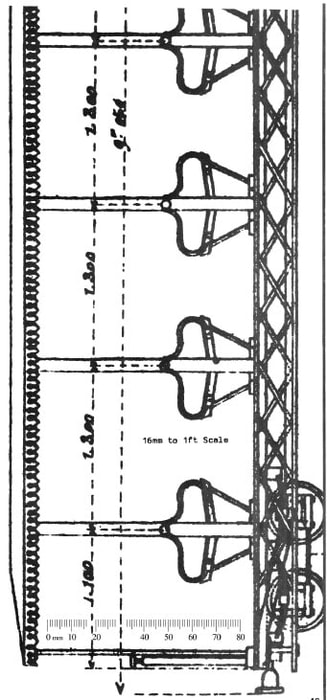
All them, were near the coast end the benefits of the open cars were doubtless appreciated by their users. Even now the history of this design is not finished, for a new tourist railway built at the southern end of the Ile d' Oleron in Charente Inf. in the early 1960'a had Type KE coaches specifically mentioned in the (successful) planning application. The numerous preservation schemes all over this country might do well to consider something similar; after all, it is basically a flat wagon on very simple bogies - the same ones in fact that were used on the standard Decauville bogie wagons; and that is the kind of underframe that is likely to be available. The nearest that we have come thus far in this country is with the coaches on the Whipsnade & Umflosi Railway, which utilised ex-Bowaters Sittingbourne 2'6" gauge paper wagon underframes. On the standard gauge, the Torbay and Dartmouth Steam Railway came within an ace of building similar vehicles a couple of years ago when a kindly tramp unintentionally provided them with two burnt-out BR Mk. 1 coach underframes. Unfortunately, the traditionalist GWR lobby managed to block the scheme. It would have been fun in Greenway Tunnel (1/4 mile long, single bore, nice gradient!).
Dimensional Details;
Length ever roof pillars* 27' 11"
Height rail to roof: 8' 4"
Width over body: 5' 9"
Wheelbase (bogie): 3' 1"
* Exact length overall depended on the type of roof or awning used by individual railway companies.
Sources: 'Railway World', July 1961, page 236 and October 1962, page 353 by kind permission of the Editor.
Dimensional Details;
Length ever roof pillars* 27' 11"
Height rail to roof: 8' 4"
Width over body: 5' 9"
Wheelbase (bogie): 3' 1"
* Exact length overall depended on the type of roof or awning used by individual railway companies.
Sources: 'Railway World', July 1961, page 236 and October 1962, page 353 by kind permission of the Editor.
